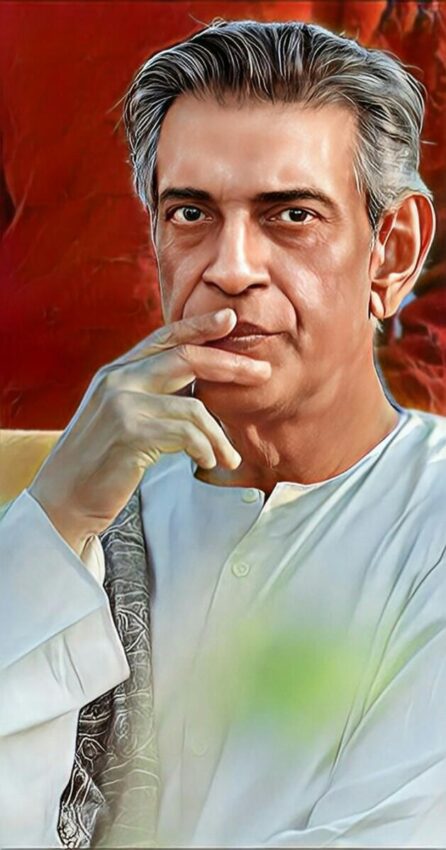The visionary Indian filmmaker whose humanistic narratives redefined cinematic storytelling. Explore his iconic oeuvre, distinctive artistic style, and profound influence on global cinema.

Satyajit Ray was not merely a filmmaker—he was a polymath whose unparalleled vision elevated Indian cinema to international acclaim. His films transcended mere storytelling, offering profound meditations on human nature, societal structures, and cultural evolution. From his seminal debut, Pather Panchali (1955), to his later masterworks, Ray’s cinematic legacy remains an enduring touchstone of world cinema.
Early Life and Formative Influences
Born on May 2, 1921, in Kolkata, Satyajit Ray was steeped in an environment of literary and artistic brilliance. His grandfather, Upendrakishore Ray Chowdhury, was a trailblazing writer, illustrator, and publisher, while his father, Sukumar Ray, was a luminary of Bengali nonsense literature. This rich intellectual heritage profoundly shaped Ray’s creative ethos.
After graduating from Presidency College, Kolkata, Ray pursued fine arts at Visva-Bharati University in Santiniketan, founded by Rabindranath Tagore. The institution’s emphasis on rural simplicity and Tagore’s humanist philosophy left an indelible imprint on Ray’s cinematic sensibilities.
The Apu Trilogy: A Cinematic Revolution
Ray’s foray into filmmaking was serendipitous yet transformative. Inspired by Italian neorealism—particularly Vittorio De Sica’s Bicycle Thieves—he adapted Bibhutibhushan Bandyopadhyay’s novel Pather Panchali into a film. Made on a modest budget with non-professional actors and authentic locales, the film garnered worldwide acclaim.
The triumph of Pather Panchali birthed its sequels—Aparajito (1956) and Apur Sansar (1959)—collectively known as The Apu Trilogy. These films traced the protagonist’s journey from rural childhood to adult tribulations, lauded for their lyrical realism, emotional resonance, and narrative profundity. The trilogy solidified Ray’s stature as a master storyteller.
Artistry and Thematic Depth
Ray’s cinema was distinguished by its humanism, understated elegance, and incisive social critique. His ability to distill the extraordinary from the mundane while addressing universal themes set him apart. Recurring motifs in his work included:
- Class and social inequality
- Feminine agency and introspection
- Existential dilemmas
- Tradition versus modernity
His visual language—marked by natural lighting, contemplative pacing, and meticulous compositions—bore the influence of European auteurs yet retained an unmistakably Indian essence. The scores, often composed by Ray himself, further enriched the emotional texture of his films.
Masterpieces Beyond the Apu Trilogy
Though The Apu Trilogy remains his magnum opus, Ray’s filmography is a testament to his versatility. Among his most celebrated works are:
- Jalsaghar (1958) – A haunting elegy on the decadence of feudal aristocracy.
- Charulata (1964) – Adapted from Tagore’s novella, a delicate portrayal of solitude and unfulfilled longing.
- Nayak (1966) – A penetrating character study of a matinee idol’s inner turmoil.
- Goopy Gyne Bagha Byne (1969) – A whimsical fantasy-adventure, beloved across generations.
- Shatranj Ke Khilari (1977) – A historical satire set against British colonial rule.
Accolades and Immortal Legacy
Ray’s contributions were recognized with numerous honors, including:
- Bharat Ratna (1992) – India’s highest civilian distinction.
- Honorary Academy Award (1992) – A lifetime achievement Oscar for his indelible impact on cinema.
Beyond filmmaking, Ray was a prolific illustrator, author, and composer. His literary creations—such as the Feluda detective series and Professor Shonku science-fiction tales—remain cultural landmarks in Bengali literature.
Conclusion
Satyajit Ray’s legacy transcends geographical and temporal boundaries. His films, suffused with empathy and intellectual rigor, continue to resonate with audiences and inspire filmmakers worldwide. Decades after his passing, Ray remains an unparalleled beacon of cinematic artistry, a testament to the timeless power of storytelling.
As he once remarked:
“The director is the only person who knows what the film is about.”
And in Ray’s hands, cinema became nothing short of poetry.

